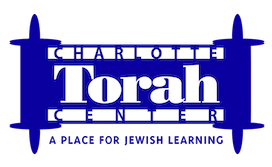A New Pair of Glasses
There is a non-kosher bird mentioned in the Torah called the Ra’ah. Scholars are not certain exactly which bird it is; many think it’s a buzzard or vulture. It is called Ra’ah (literally to see) because it can see very far and can spot a carcass from an incredible distance.
Rav Meir Shapiro (1887-1933) offered a profound homiletical insight. He suggested that the Ra’ah represents a certain type of person—not just a bird. There are those who live in the diaspora, and look toward Eretz Yisrael (Israel)—but what do they see? They don’t see the holiness, the promise, the fulfillment of centuries of yearning. Instead, they see only the problems. The headlines and politics–flaws. Like the buzzard, they zero in on the carcass.
A History of Distorted Vision
This phenomenon, Rav Meir Shapiro explains, is not new. It began with the spies who returned from Eretz Yisrael with an evil report (Numbers 13-14). Despite witnessing a land of abundance and promise, they focused on the giants, the fortresses, and their fears. They saw, but they didn’t see. Their vision was distorted by their insecurity, their lack of trust, and their inability to see the good.
But King David wrote a Psalm (128:6) giving a different mandate; And see the good of Jerusalem. This is not just a blessing, it’s a directive, a mindset, and way of seeing.
We Choose What We See
What we choose to see says everything about who we are. The Ra’ah is not evil because it sees. It’s a non-kosher bird because of what it chooses to see. Its power of vision is trained on death, not life. It flies over valleys and fields but only zooms in on decay.
This is a powerful metaphor for how we, too, can misuse the gift of vision. We scroll through news feeds and social media, and we are trained—almost conditioned—to notice the bad. The dysfunction. The outrage. The corruption, but as Jews, something deeper is being demanded.
Two People, One View—Two Realities
There are always two ways to see the Land of Israel. One person stands at the Kotel (Western Wall) and sees the tension of differing religious outlooks. Another stands in the same place and sees the miracle of a people returning to their homeland, the heartbeat of a nation still alive after 2,000 years. One sees a society with divisions and growing pains. Another sees a society where Torah is being learned in unprecedented numbers, where Jews from Yemen, Ethiopia, Russia, and America daven together in the same shul. The Land has not changed—but the eyes have.
A Deeper Kind of Vision
To see the good does not mean ignoring reality. It doesn’t mean denying challenges. But it does mean choosing to look deeper. It means learning to interpret what we see through the lens of gratitude, hope, and loyalty. It means appreciating the courage of those living on the frontlines, the resilience of families building Torah communities, and the quiet holiness of daily life in the Land. It means noticing the small miracles: a child saying Shema in Hebrew on a playground. A rebuilt yeshiva in a city once desolate. A Shabbos meal in Jerusalem shared by four generations. It means understanding that criticism without love is blindness, but vision fueled by love sees what others miss.
The Test of the Spies Returns
In every generation, the test of the Spies returns. Will we see a land that “devours its inhabitants,” or will we see a land flowing with milk and honey? Will we become spiritual buzzards or sacred seers? Rav Meir Shapiro’s insight gives us our marching orders: we are not passive observers—we are active perceivers and allow it to be our spiritual glasses. Let us train our hearts and our minds to notice, to name, and to nurture the good in our People and in our Land because when we see the good, we bring it closer and when we speak it out loud, we help the world see it too.
You Are Where Your Thoughts Are
Rebbe Nachman of Breslov taught, you are where your thoughts are—make sure your thoughts are where you want to be. This teaching is not only about inner work; it’s about the power of vision. When we look at Eretz Yisrael—or at any Jew, or at ourselves—with a cynical or dismissive eye, we spiritually exile that person or place. But when we look with hope and a searching eye for goodness, we elevate what we see. Rebbe Nachman urged his students to constantly seek the nekudah tovah, the tiny spark of good—even if it seems hidden or faint. This too is the avodah—sacred work—of seeing the good of Jerusalem—to see the good, even when it’s hard to find. Not because we are naïve, but because we are builders. Builders of faith in humanity, building of faith in ourselves, and, most of all, builders of faith and trust in the Almighty. Emunah. Builders of redemption. May we merit to become those who look with sacred vision, speak with love, and help reveal the deep goodness in Yerushalayim, in our people, and in ourselves.
Good Shabbos

